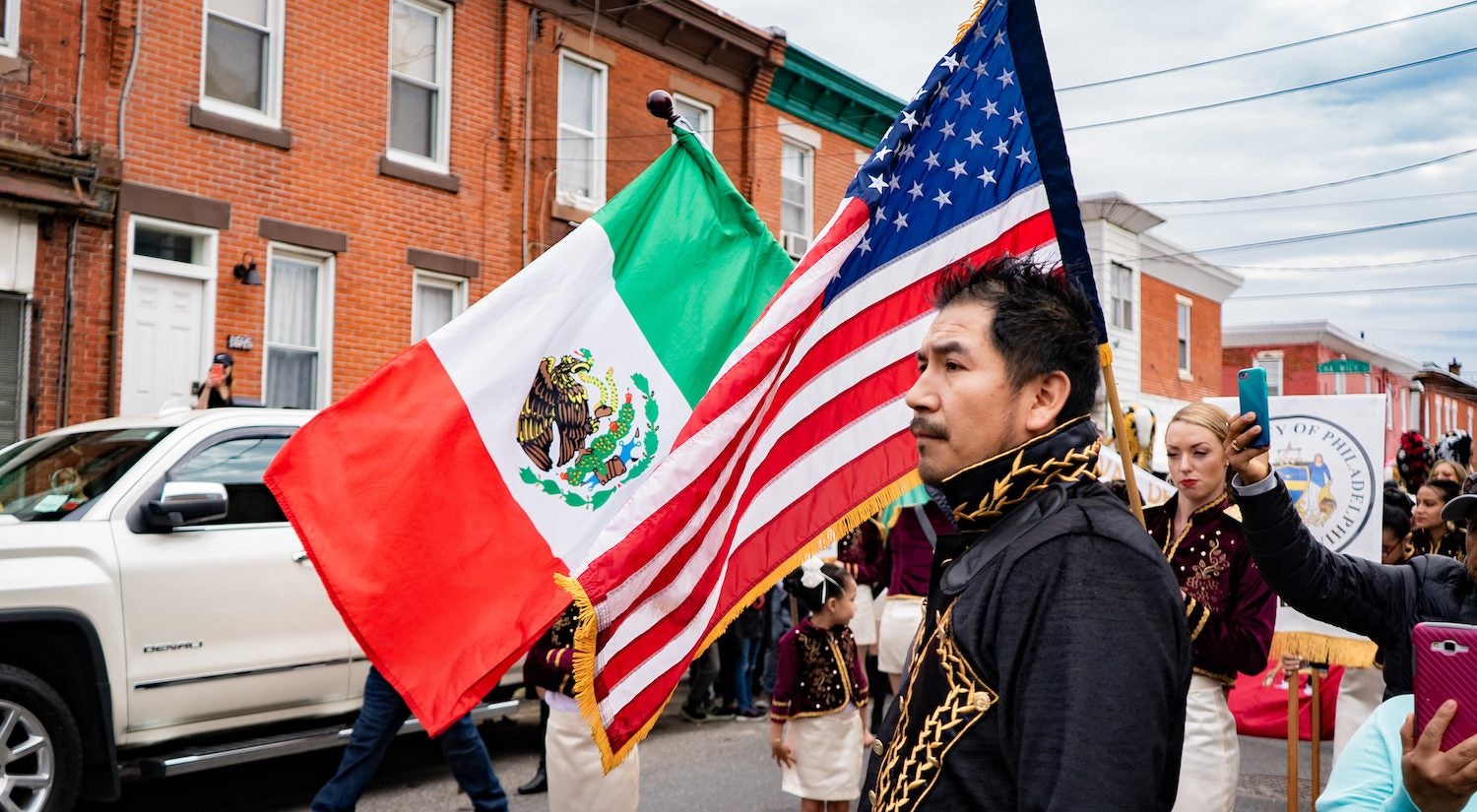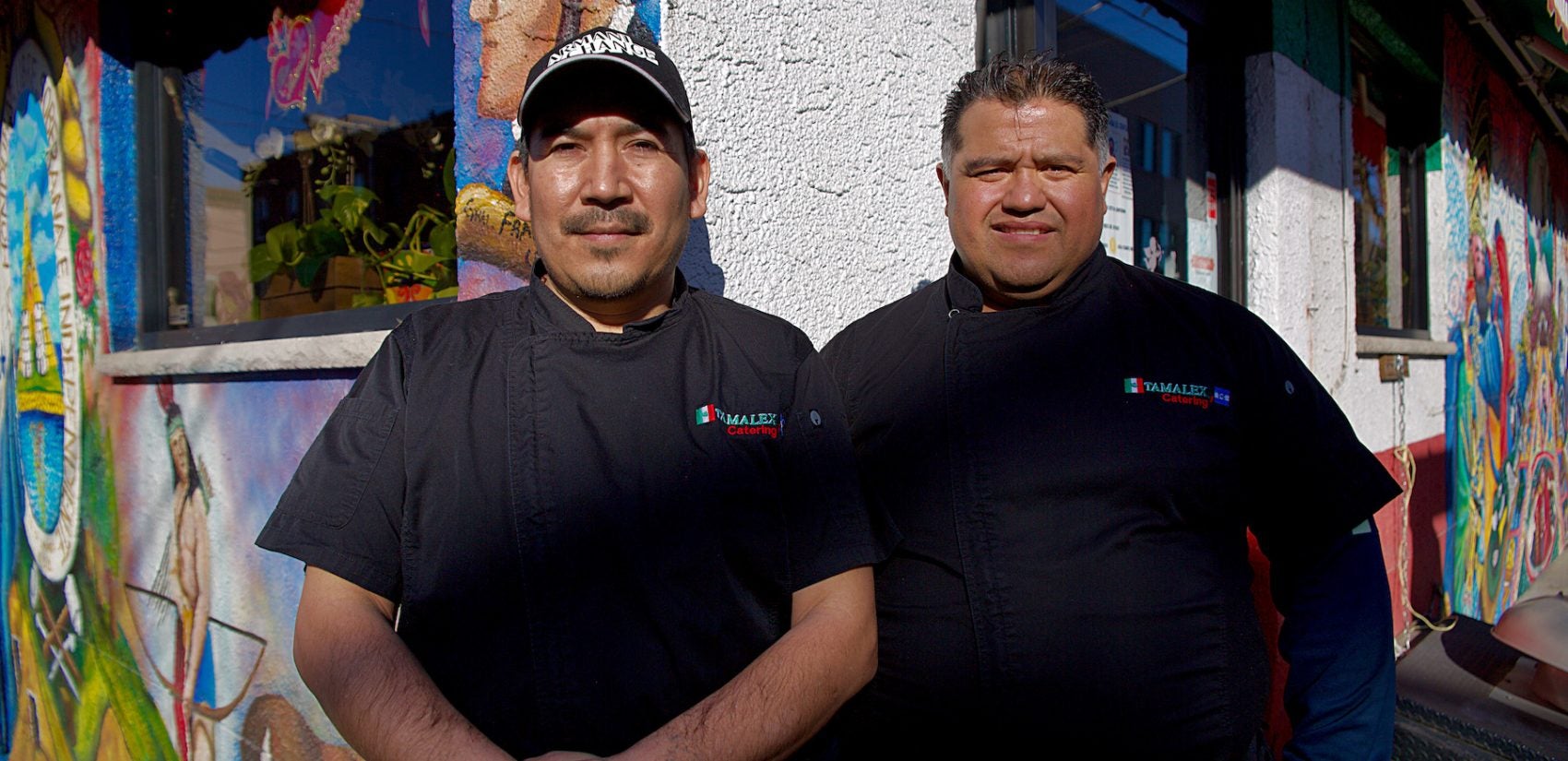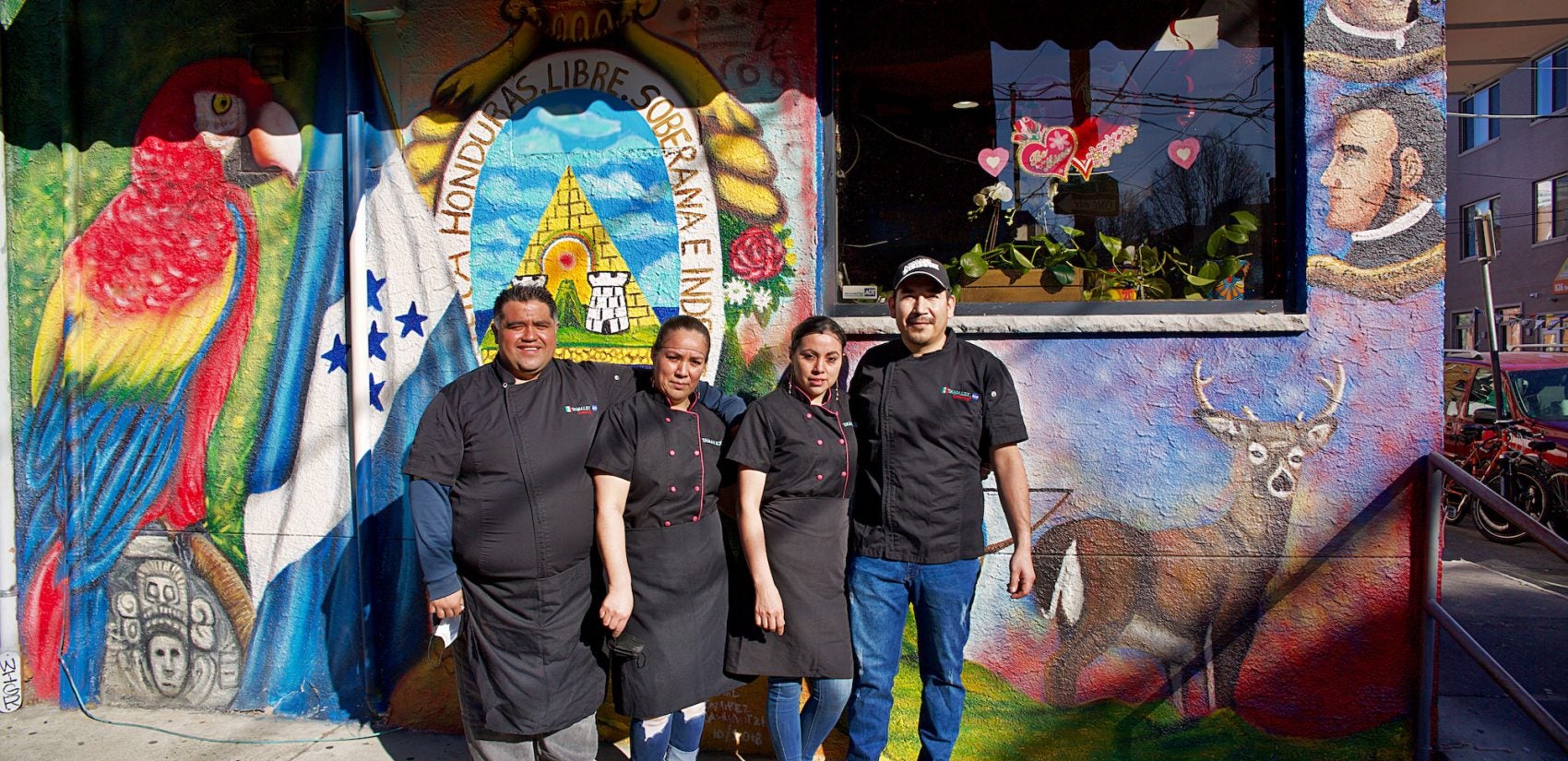Philly’s Carnaval de Puebla is going virtual. David Piña wants you to see the joy
The Carnaval de Puebla tradition started by Philly’s Mexican community will live on this year with two concerts and celebration held April 25 on Facebook Live.
This story is part of The 47: Historias along a bus route, a collaboration between WHYY’s PlanPhilly, Emma Restrepo and Jane M. Von Bergen.
This article is written in English. To read this article in a combination of English and Spanish, click or tap here o para leer este artículo en español, haga clic o toque aquí.
Una mezcla – a mixture.
That’s what the annual Carnaval de Puebla is for Mexican restaurateur David Piña who, with cousins and friends, introduced this colorful parade of costumed marchers and musicians to his new home city of Philadelphia nearly 14 years ago.
It’s the same mezcla experienced by many immigrants – a longing for the customs of home and the joy that comes in reliving them here. Pride comes with presenting a heartfelt gift of something new and beautiful to new neighbors.
“At first it was enjoyable, because, for the first time, we were doing such an event in Philadelphia, in a country outside our own,” said Piña, whose father, Pedro Piña, recently deceased, was a carnavalero in Mexico. “It was a success. Many people liked it. They were happy for the first time that they were witnessing such an event.”
But mixed with the pride was a shadow. How would the Carnaval be received?
“Imagine, a country that is not ours,” Piña said. The participants and bystanders were enthusiastic, but cautious. “At the same time we had that fear. If they don’t like it, they throw us out to the police.”
Not likely now.
Until COVID-19 diminished last year’s Carnaval, the springtime event had established itself so firmly in the city’s rich tapestry of ethnic celebrations that Visit Philadelphia, the city’s tourism office, promoted the parade and fiesta to out-of-towners.
This year, because of the pandemic, Piña can add sorrow to the mix, along with the hope, that virtual events will keep the tradition alive.

“It’s a little sad the situation we are going through,” he said. “We will continue to do our part and we will continue to move forward and hopefully, there will be a Carnaval de Puebla for a long time.”
Based on the events of May 5, 1862, the Carnaval de Puebla is essentially a military reenactment, with colorful costumes and music, of the battle in which a small, but mighty Mexican army defeated French colonizers and restored the country’s independence.
“The Carnaval brings history,” Piña said. “Everything is based on the Battle of Puebla. They are adopting characters from those who participated in the battle of Puebla and [from there] they form the costumes.”
The participants march in battalions – each with its distinctive costume. The Indio Serranos and the Zacapoaxtlas are on the Mexican side, with the Serranos’ costumes adorned with images of the beloved Virgin of Guadalupe. The Zuavos, Turcos and the Zapadores fight for the French.

The Carnaval parade, which crosses the Route 47 bus route on Washington Avenue, also includes horses and a reenactment of a love story, featuring a bride and groom.
Without any significant financial support from outside the community, Piña, his cousins, and friends formed the Organización San Mateo and through it, grew the Carnaval year by year.
Each costume runs hundreds of dollars. In a community where money can be scarce, Carnaval members contribute $1,500 each to fund the Carnaval. In 2019, the Carnaval cost more than $60,000, including city permits and money to bring in Mexican bands to play for the event. The city’s Mexican consulate helps with some logistics.
In Mexico, the Carnaval began in 1868 in Huejotzingo, a town in the state of Puebla, where it is celebrated for four days just before the pre-Easter season of Lent – and includes the usual mix of food, fun, and alcohol.
In Philadelphia, the weather is colder, so the Carnaval is typically held in late April, closer to May 5. This year, it will be virtual, as organizers share audio, video, and photos from previous years and host a live concert featuring two Carnaval bands via Facebook Live on April 25. Piña cautions celebrants to avoid any behavior that could attract unwanted attention from immigration officials or the media.
“Unfortunately, we always have the press watching the bad spots,” he said, pointing out that such reporting overlooks the joy of an event that draws 300 to 350 participants and 8,000 spectators.
“Being a carnival-maker is not being a clown,” Piña said. “It’s not a synonym for entertaining other people. You have to have knowledge and respect what you carry.”
And what Piña carries is tradition and community. “Bringing a culture from us today is a pride,” he said.
Celebration is part of Piña’s nature. In the fall, he organizes festivities for El Día de los Muertos, the Day of the Dead, at his restaurant, Tamalex, in South Philadelphia.

In Mexico, Piña was, he said, a rebel. Wanting more than his parents could provide, Piña dropped out of school at age 14 and left his home in San Mateo Ozolco, a small village in the state of Puebla. He moved to Mexico City. There, he eventually found a job in a restaurant kitchen – working for eight or nine hours a day, earning two dollars a week as an underage, under-the-table worker.
By 17, Piña was running the kitchen and the restaurant became a favorite of the city’s celebrities – artists, fighters, the famous people. The work was hard, but his leadership in the kitchen made him proud.
“It was a responsibility I had been dreaming of for a long time.”
He had earned one of the most-esteemed titles in the restaurant business.
“They are going to call me ‘chef,’” Piña said. “They are not going to call me by my name anymore.”

Persuaded by his cousins, Piña decided to come to Philadelphia in March 1998 at the age of 19. He quickly landed a job in a pizzeria in New Jersey, working there for nine years. Seven of those years, he was in charge.
“We Mexicans always want to become the heroes of every cuisine. Because we have arrived and worked really hard, we want to show the capacity of what we have. We are made of good wood.”
Working hard was nothing new for Piña. “My parents would wake me up at 5:30 or 6 a.m. and we would go to the country to feed the little animals we had. We were coming back at 8 because at 8:30 we had to go to school. At 6 p.m., I would feed the animals again and do schoolwork.”
Piña’s bountiful energy has helped him provide for his five children and build a community in addition to a business.The bright murals on Tamalex’s walls can be seen from the 47, as the bus moves north on Seventh Street.

Tamalex also functions as a community center. In the pandemic, his employees packed boxes of food for those in need. He and his partner, Alejandro “Alex” Mondragón, make it a practice to employ women, many of them single immigrant mothers. It’s the partners’ way of contributing to the economic welfare of their neighborhood.
As much as Piña has contributed, his ambitions for his restaurant, for the Carnaval, and indeed, for the community, have no limits.
“I am still fighting for that dream,” he said. “I’m doing it with luck and work. There are people who call it ambition. I call it the dreams we all have.”
Celebrate this year’s Carnaval de Puebla on April 25 online with the two of the best bands of the carnavaleros genre from Puebla.

Subscribe to PlanPhilly
WHYY is your source for fact-based, in-depth journalism and information. As a nonprofit organization, we rely on financial support from readers like you. Please give today.






